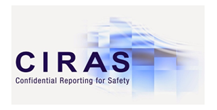STREET WORKS QUALIFICATION REGISTER (SWQR)
QUALIFICATION FOR OPERATIVES: O5- REINSTATEMENT IN COLD-LAY BITUMINOUS MATERIALS
Pre-Requisite:
Street Works Assessment Standards – Reinstatement in Cold-Lay Bituminous Materials
Certificate Aim
This certificate has been designed to allow the candidate to demonstrate the skills and knowledge required to carry out reinstatement using cold-lay bituminous surfacing material. The candidate will be able to prepare the pavement layer to receive cold-lay surfacing materials. The candidate will be able to identify and select materials to be used for the reinstatement and construction of the cold-lay bituminous binder and surfacing layer using the correct equipment. The candidate will also be able to correctly identify and safely dispose of surplus materials and materials that cannot be re-used.
Reinstatement in cold-lay bituminous materials
Learning Outcome 1 Prepare the layer of pavement structure to receive permanent cold-lay surfacing materials
Assessment criteria:
1.1 remove loose and unacceptable materials from the area to be reinstated using suitable equipment
1.2 identify and correct pavement layer surface contamination or defect
1.3 use suitable equipment to trim back edges where damage has occurred
1.4 use suitable equipment to re-position displaced ironwork, kerbs and edge restraints in accordance with established levels
1.5 use the specifications to confirm that the correct depth is left for the cold-lay surfacing layers
1.6 check the polished stone value (PSV) of the permanent cold-lay surface course material meets specifications
Learning Outcome 2 Understand how to prepare the layer of pavement structure to receive cold-lay surfacing materials
Assessment criteria:
2.1 state why loose and unacceptable materials are removed from the area to be reinstated
2.2 state how loose and unacceptable materials are removed from the area to be reinstated
2.3 state the potential consequences of pavement layer surface contamination or defects
2.4 define how pavement layer surface contamination or defects are identified and corrected
2.5 state how to identify and correct edge damage and undercut
2.6 define how displaced ironwork, kerbs and edge restraints are repositioned
2.7 state the potential consequences of incorrect pavement layer construction.
Learning Outcome 3 Construct a cold-lay bituminous surfacing layer
Assessment criteria:
3.1 check that imported bituminous material complies with the specification
3.2 select compaction equipment and ensure that it is:
(a) suitable for the operation
(b) in working condition and safe to use
3.3 seal edges of the cavity using specified edge sealant
3.4 store cold-lay bituminous material to prevent contamination, oxidation and wetting
3.5 spread and level cold-lay bituminous material in binder course and surface course layers
3.6 handle cold-lay bituminous material correctly
3.7 reinstate around highway iron work according to the specification
3.8 compact the bituminous material according to the specification.
Learning Outcome 4 Understand how to construct a cold-lay bituminous surfacing layer
Assessment criteria:
4.1 define the factors that influence the selection of equipment for the prescribed operation
4.2 state the checks required to ensure that equipment is in working condition and safe to use
4.3 define the handling and storage procedures for cold-lay bituminous material
4.4 state why cavity edges are sealed before placing surface layers
4.5 state how to determine the surcharge prior to compaction of cold-lay surfacing materials
4.6 define the compaction procedures for cold-lay bituminous material
4.7 state how to confirm that the compacted layer thickness meets specifications.
Learning Outcome 5 Dispose of surplus materials
Assessment criteria:
5.1 identify materials that are unsuitable for re-use or surplus to requirements
5.2 store surplus materials and those unsuitable for reuse in safe temporary storage
5.3 ensure materials for disposal are loaded safely for transportation.
Learning Outcome 6 Understand how to dispose of surplus materials
Assessment criteria:
6.1 define how materials that are unsuitable for re-use or surplus to requirements are identified
6.2 state the importance of storing unsuitable and re-usable materials separately
6.3 state when surplus materials should be removed from site.
Learning Outcome 7 Follow safe working practices
Assessment criteria:
7.1 follow current relevant health and safety regulations, standards and other legislation relating to:
(a) working practices within the construction environment
(b) working practices specific to any practical task that they are required to carry out.
7.2 identify the current relevant health and safety regulations, standards and other legislation that must be applied in relation to:
(a) working practices within the construction environment
(b) working practices specific to any practical task that they are required to carry out
7.3 leave the site in a clean and safe condition
7.4 describe how to leave the site in a clean and safe condition.
Evidence Requirements / Scope
Some terms, used in the assessment criteria, cover a range of situations, as follows:
1. Equipment includes:
(a) Hand tools – including square and round mouth shovels, hand pick, hard bristle broom, profile gauge and measuring tape
(b) Powered equipment – including breakout equipment, road saw, disc cutter, vibrotamper, vibrating roller or vibrating plate and Turk’s head brush or aerosol applied sealant
2. Safe working practices include:
(a) safe use of tools and equipment
(b) PPE (including, as necessary: high visibility jacket or waistcoat, hard hat, ear defenders, gloves, protective footwear, waterproof clothing, eye protection visor or goggles, glasses, dust mask)
(c) use of risk assessment methods to identify and control hazards on site
(d) precautions to minimise danger or inconvenience to road users and pedestrians
(e) precautions to minimise danger or inconvenience to site personnel
(f) precautions to minimise damage to equipment or apparatus.
3. Specifications and procedures include:
(a) Specification for the Reinstatement of Openings in Highways
(b) Safety and Street Works and Road Works – A Code of Practice.
(c) Health and Safety Guidance 47, Avoiding Danger from Underground Services
(d) Health and Safety Guidance 150, Health and Safety in Construction
(e) manufacturers’ operating procedures for powered tools and plant.
4. Materials identified for reinstating a cold-lay bituminous surfacing layer include:
(a) deferred set mixtures for reinstatement
(b) permanent cold-lay binder and surface course materials
(c) cold edge sealant.
5. Materials for disposal include:
(a) unsuitable surplus materials
(b) surplus materials that are suitable for re-use. Assessment Requirements and Guidance
Assessment for this unit consists of practical observations and a multiple-choice knowledge examination to cover the requirements of the learning outcomes.
Current requirements for practical observations, including Assessor and Internal Quality Assurer qualifications and facilities requirements are provided in the HAUC (UK) The Street Works Assessment Strategy.



